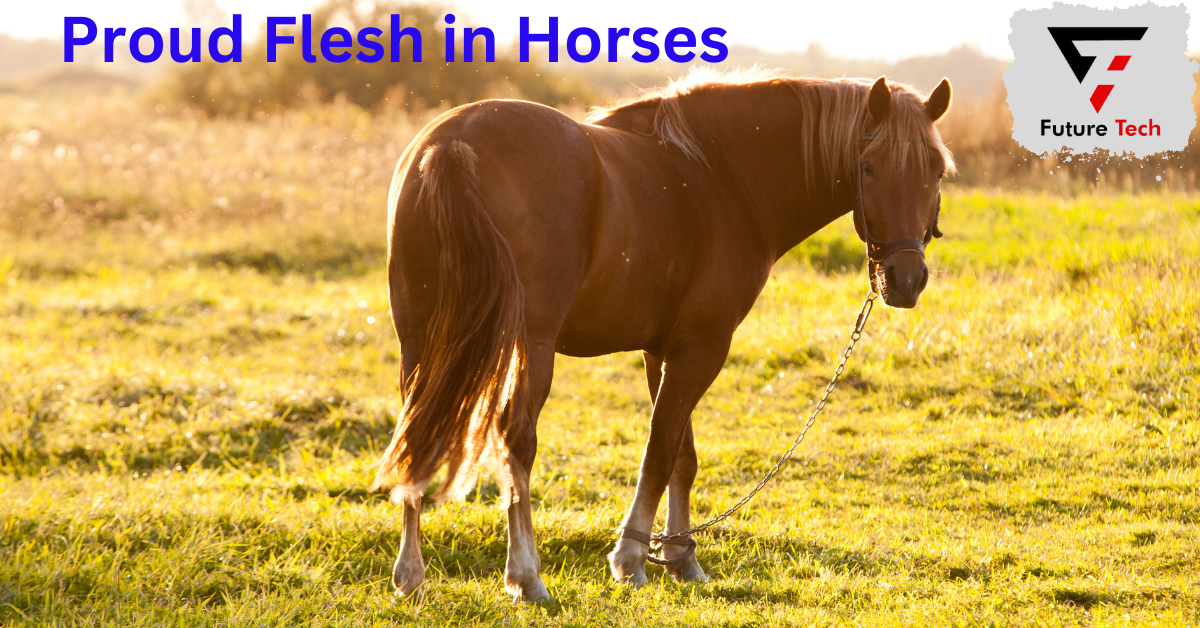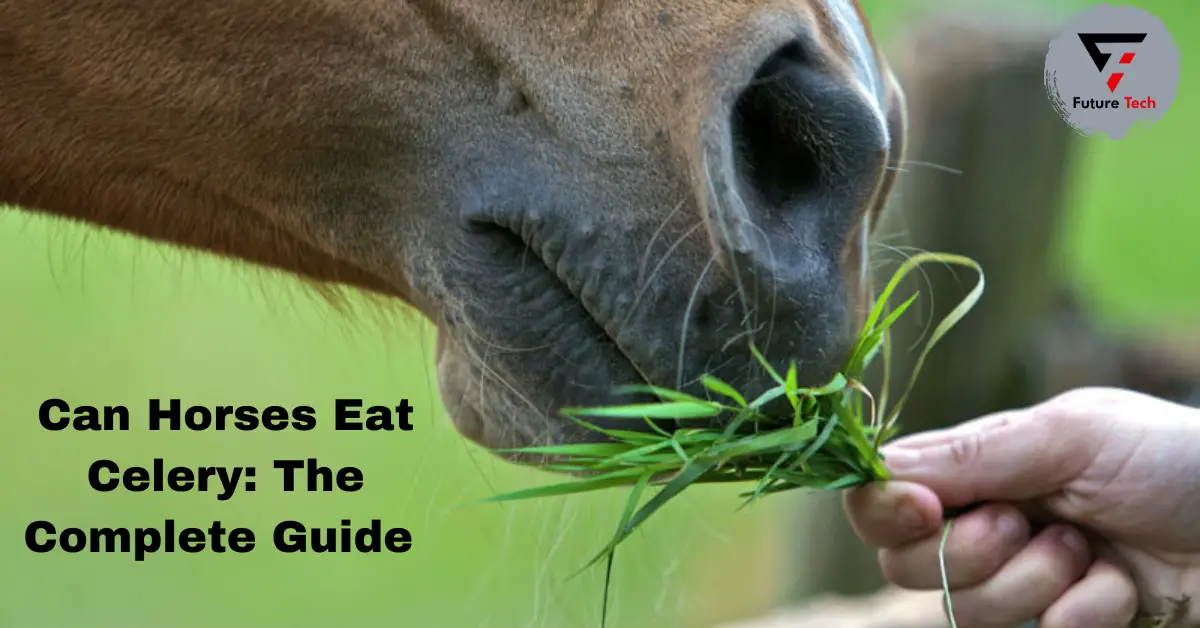The horses with proud flesh have an excess of granulation tissue. The body produces a substance called granulation tissue during wound healing. Medical terminology also refers to it as “exuberant granulation tissue.” You can identify it by its red, uneven, and cobblestone-like appearance.
Horses often have a problem called proud flesh, which usually affects the area below the knee and hock on the horse’s legs. The complete thickness of skin, Leaving unstitched wounds to heal, naturally increases the chance of proud flesh forming. It would help if you tended to your horse’s wounds right away. An emergency is any wound covering a tendon or joint. If you don’t sew up wounds with full-thickness skin that can heal on its own, you might end up with proud flesh.
Symptoms of Proud Flesh in Horses
- Redness
- Unevenness
- Pebbles or cobblestones appearance
- Crumbly
- The wound contains blood vessels.
Reasons for Horses to Have Proud Flesh
A few situations may lead to the formation of proud flesh in horses:
- High-motion areas, such as those close to joints
- moist warm conditions
- Low-oxygen environments
- Infection
- a foreign substance, such as grass, hay, or soil
- Medicines or treatments that delay the development of the skin
- skin loss close to a wound
Compared to other animals, horses and ponies are more prone to produce exuberant granulation tissue; nevertheless, ponies are less likely than horses to acquire proud flesh.
Lower limb wounds are more likely to grow proud flesh. This is because these wounds are often too small to get sutured shut, they move a lot, and they are near the ground, making it difficult to remain clean. The region around the cannon bone and the pastern are the most vulnerable places to proud flesh.
How Doctors of Veterinary Analyze Proud Horse Flesh
Your veterinarian may diagnose proud flesh based on the look, texture, and history of a wound in that location. Proud flesh is occasionally incorrect for other disease processes, such as sarcoids, habronema, fungal infections, or malignancies. Your veterinarian will collect a tissue sample and send it to the lab for investigation if they have any suspicions that anything more complicated is going on.
Assessment
To guarantee a precise diagnosis, consult your veterinarian if you think your horse may have abundant granulation tissue. Your horse’s veterinarian can tell whether the granulation tissue growing in a wound on its body is typical or excessive. In horses, the diagnosis of proud flesh is usually simple since this tissue has a distinct look. Your veterinarian will diagnose granulation based on the following:
- Visual Examination: Your veterinarian will carefully inspect the wound and surrounding tissues. They will look for specific characteristics in the injury to distinguish EGT from typical granulation tissue—which appears as an excessive proliferation of pinkish or reddish tissue with a rough or bumpy texture.
- Palpation: To evaluate the texture and amount of granulation tissue development, your veterinarian may lightly touch the area. They could assess the vascularity and hardness of the wound as well.
- Measurements: You may record the size and dimensions of granulation tissue and wounds to track changes.
- Differential Diagnosis: Your veterinarian may need to rule out additional possible reasons for problems with wound healing, such as infection, foreign objects, or abnormal growths (neoplasms). Granulation tissue may sometimes confused with other illness conditions such as sarcoids, fungal infections, infections caused by the parasite Habronema, or cancer.
- Medical History: To get additional information, your veterinarian can interview you about your horse’s past medical conditions, any recent injuries, and the status of the wound.
- Skin Biopsy: If your veterinarian senses an underlying problem that needs further research or if there are concerns about the wound’s healing process, a biopsy may be necessary in some situations.
Preventing Proud Flesh
Chronic inflammation and infection mainly cause the development of proud flesh in a wound. Your veterinarian should properly examine any injury and remove foreign objects, broken bones, or dead tissue that might lead to infection or inflammation. Additionally, they must lavage (flush) it immediately, ideally with a balanced saline solution. Your veterinarian may clean the area and then apply the proper dressing and bandage, which will depend on the specifics of each instance.
If wounds seem deep or large, cover vital structures like joints and tendons, or already exhibit proud flesh growth, speak with your veterinarian. Debridement (trimming) of dead tissue or wound closure may sometimes be necessary. Companies promote many over-the-counter medications as preventives for proud flesh. Medical-grade honey dressings are highly soft and moisturizing, and they seem particularly efficient in supporting healing wounds with antibacterial properties.
Proud Flesh: Treatment and Observation
Selecting the optimal course of therapy requires consultation with a qualified veterinarian. To resolve small amounts of proud flesh, practitioners may sometimes use firm bandaging to limit mobility and promote wound healing, along with thorough wound cleansing, topical creams, and healing techniques. Sometimes, healthcare providers advise using acidic materials, and laser treatment is helpful.
The best course of action for a wound with an overabundance of granulation tissue is often surgery. Usually, this entails trimming away any extra tissue. Although this procedure is often highly bloody, granulation tissue has relatively few nerves or nerve endings. Therefore, it is typically painless. While local anaesthesia is not essential for removing tiny quantities of proud flesh from a standing, sedated horse, it is sometimes helpful to numb the surrounding region as necessary.
General anaesthesia is very seldom necessary except in situations with extensive proud flesh when it could assist in aggressively managing the significant bleeding that would ensue. Surgical debridement, or “cutting back,” has several uses. In addition to minimizing the size of the incision, it also removes many of the “blocks” that prevent healing. Cutting back the proud flesh to just below the skin’s surface is standard procedure. This might let cells move over the wound’s boundary and cause the skin’s edges to constrict.
Alternatively, if proud flesh has been present for an extended period and the wound’s margin is unhealthy, you may need to trim back the sensitive edges of the wound. The goal of treatment is to create an injury that is healthy and eager to heal.
Observation
After such surgery, it is essential to maintain careful wound dressing; typically, you should change the bandages every 24 hours. At this point, the veterinarian will re-evaluate the incision and determine whether or not it will heal on its own. Sometimes, you may need to immobilize the wound site with a cast or firm bandage.
After conducting a proper culture and sensitivity test to identify the bacteria causing the infection and reduce the likelihood of antimicrobial resistance, you may need to manage the infection with antibiotics.
Using Casts or Bandages
Certain granulating wounds benefit from remaining exposure to the air and are unbandaged to inhibit the development of EGT. In certain situations, practitioners may advise the use of topical steroid bandaging. According to research, covering wounds with bandages or casts may help granulation tissue form by modifying cellular activity and oxygen saturation at the wound site. By aggravating wounds, dressings used under casts and bandages may also encourage proud flesh. Exudate from injuries may build up, and inflammation may intensify while using occlusive dressings.
For certain wounds, topical steroid dressings, however, could be helpful. Bandaging preserves healing wounds, creates a moist environment that encourages skin cell proliferation, and lessens the chance of bacterial infection. In horses with wounds, casts may also aid in preventing the growth of profuse granulation tissue. Casts limit mobility in highly mobile body parts, including the legs, to minimize interference with the healing process.
Conclusion
Proud flesh in horses is an excess of granulation tissue produced during wound healing. Its appearance is red, uneven, and cobblestone-like; you can identify it this way. It affects areas below the knee and hock on the horse’s legs. Symptoms include redness, unevenness, pebbles or cobblestones, and a crusty wound with blood vessels. Proud flesh is more common in horses and ponies but less common in ponies. Veterinarians diagnose proud flesh based on the wound’s appearance, texture, and history.
Chronic inflammation and infection cause proud flesh in wounds. Veterinarians should examine the injury, remove foreign objects, and lavage it immediately. If wounds are deep or large, debridement or wound closure may be necessary. Over-the-counter medications like medical-grade honey dressings can help prevent proud flesh. Treatment involves consultation with a veterinarian, bandaging, cleansing, topical creams, and healing techniques. An overabundance of granulation tissue often requires surgery; sometimes, local anesthesia is necessary. After surgery, you should change the wound dressing every 24 hours. For certain wounds, you may use casts or bandages.




